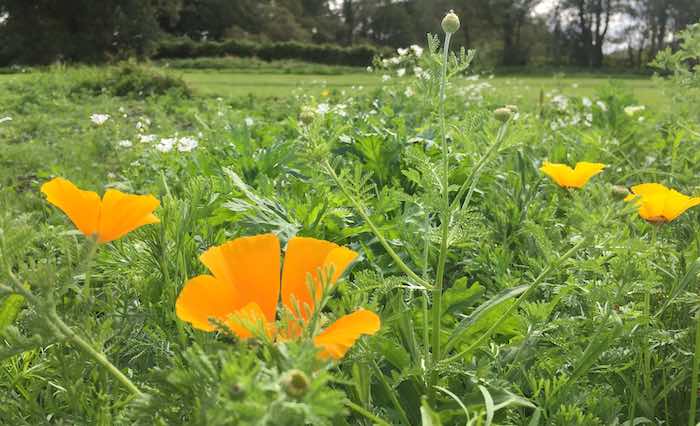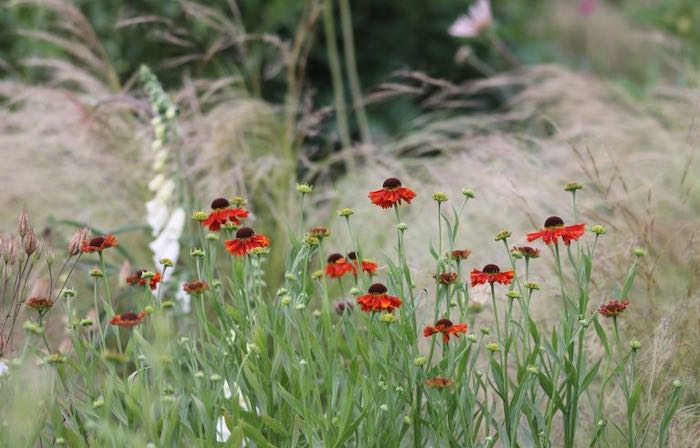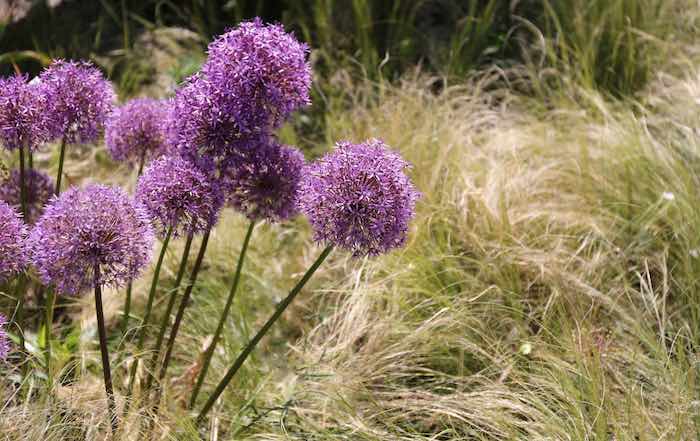Planting Perennial Flowers in Autumn
This week I thought we would take a break from vegetables and look instead at the flowering garden. Some of you may remember my ambitious plans earlier in the year to create a number of flower beds around my house; the plan was to introduce a range of perennial flowers and grasses to appeal to my family as well as the local pollinating insect population. As it turned out, everyone went nuts for vegetable growing this year so most of the plans had to be put on hold, until now.

Just so you don't think I am a total failure, I did manage to get my wildflower meadow done, even though the seeds were sown much later than they should have been. You can see some of it starting to flower now (normally it would be spring), with beautiful candy orange California poppies coming up among drifts of white 'baby's breath'. I can also see blue cornflower, pink poppies and a load of other unknown flowers beginning to open, so I am looking forward to a very welcome September show - both for me and the bees.

Native Irish Grown Wildflowers - Biodiversity Meadow
View ProductThe meadow mix is a collection of annual and perennial flowers and grasses, many of which will continue to flower next year. As there is still a decent bit of bare soil between the plants I am hoping many of the annuals will also drop seed and come back on stage for an encore next year. I will keep you posted on how all this works out and what maintenance is required.

The Benefits of Planting Perennial Flowers in Autumn
Although most people put in flowering plants in spring for the summer ahead, autumn is actually a very good time to plant up a garden for the following year. As you know from the name, perennial flowers come up every year - so plants started now will flower next season and for many years to come.
There are some very good reasons why autumn planting can be preferable to spring, so it's surprising more people don't do it. Here's why I think September should be the start of next years' garden rather than the tail end of this one:
1 - Autumn Weather is More Consistent
Spring can be a difficult time for planting, with surprise late frosts or potential dry spells. Early autumn is more likely to have a steady temperature and reliable rainfall to get plants off to a good start.

2 - The Soil is Warmer
Establishing plants are more concerned with soil temperature than air temperature to build their root systems. In our Northern latitudes the soil can take some time to warm up in spring. Autumn planted perennials on the other hand will enjoy warm soil even if the air temperature is falling.
3 - A Healthy Root System Gives Bigger Plants Next Year
Autumn planted perennials will have had time to establish their roots and will have a head start when spring comes around. They will be further along and will flower more than those put in in next year.
4 - Less Competition With Weeds
At this time of year weeds are winding down rather than winding up. If you have been keeping beds under control in summer, there will be less competition with your new plants for light and nutrients.

5 - Mixing Perennials and Grasses with Spring Blooming Bulbs
This is the big one for me. Some of the most interesting and pleasing plant combinations are achieved with bold, architectural bulbs like alliums (above) mixed with grasses or other more wispy shapes. As spring flowering bulbs are planted in September/October, you are better off getting the perennials in now. If you do it the other way around you may disturb your bulbs.
I love bulbs as - in the case of tulips or daffodils - they are the first to come up in a dull garden and always look amazing. Areas of muted winter colours are suddenly transformed with vivid pinks, purples and oranges as your beds suddenly bursts into life. There is an element of fun too when later bulbs like alliums suddenly appear, with their showy white or purple pom poms punctuating the garden.
